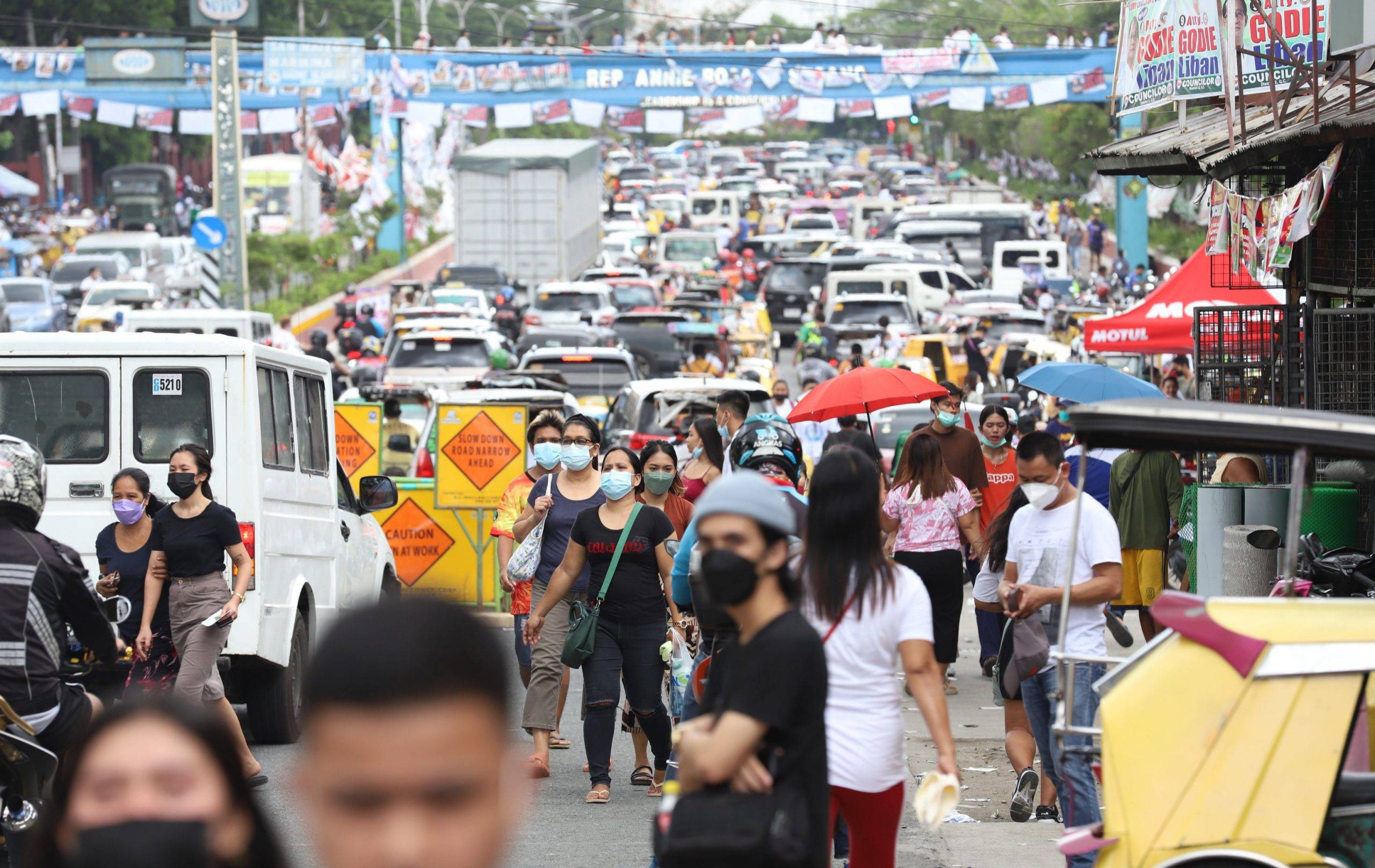News
More Filipinos prefer to live in urban communities: PSA

FILE: Batasan Road in Quezon City turns into a parking lot while voters troop to the President Corazon Aquino Elementary School and Batasan Hills National High School on Monday (May 9, 2022). Traffic enforcers and police manned the major street since voting began at 6 a.m. (PNA photo by Robert Oswald P. Alfiler)
MANILA – Some 58.93 million or 54 percent of the 109.03 million Filipinos lived in urban villages in 2020, the Philippine Statistics Authority (PSA) reported on Tuesday.
The report said it represents an increase of 7.20 million persons from the 51.73 million urban residents in 2015.
“The rural population or those who lived in barangays classified as rural in 2020 comprised the remaining 50.10 million persons or 46.0 percent of the total population,” the PSA said.
The report also showed that the level of urbanization or the proportion of the total population living in barangays classified as urban was recorded at 54.0 percent in 2020.
“This is 2.8 percentage points higher than the 51.2 percent level of urbanization in 2015,” the PSA added.
Among the five regions that surpassed the national level of urbanization in 2020 are Calabarzon (70.5 percent), Davao (66.8 percent), Central Luzon (66.3 percent), and Soccsksargen (55.5 percent), which were also listed in 2015.
Meanwhile, Eastern Visayas (14.7 percent), Cagayan Valley (19.5 percent), Bicol (23.8 percent), Ilocos (25.5 percent), and Bangsamoro Autonomous Region in Muslim Mindanao (27.6 percent) posted the lowest level of urbanization.
“Of the country’s 81 provinces, 11 provinces registered a level of urbanization higher than the national level in 2020,” the PSA reported.
The cities of Angeles in Pampanga and Mandaue in Cebu had the highest level of urbanization with 100 percent each, followed by Olongapo in Zambales (98.5 percent), and General Santos City in the Soccsksargen region (98.4 percent).
Davao City posted the biggest urban population among the highly-urbanized cities outside Metro Manila with 1.63 million urban residents or a level of urbanization of 91.8 percent.
It was followed by Cebu City with 908,195 urban population and 94.2 percent level of urbanization, and Zamboanga City with 869,929 urban population and 89 percent level of urbanization.
Two component cities and eight municipalities are classified as entirely urban — Santa Rosa and Cabuyao cities in Laguna; Taytay and San Mateo in Rizal; Marilao in Bulacan; Jolo in Sulu; Santo Tomas in Pampanga; Morong in Bataan; Talaingod in Davao del Norte; and Kalayaan town in Laguna.
Between 2015 and 2020, the PSA said the tempo of urbanization was computed at 2.4 percent, lower by 2.2 percentage points as against the 4.6 percent tempo of urbanization from 2010 to 2015.
The rural population likewise improved by 0.4 percent annually between 2015 and 2020, from a 0.5 percent annual decline from 2010 to 2015.






















Chabelita Dela Cruz
July 6, 2022 at 2:20 PM
Karamihan sa province ngayon ay para naring syudad. Kaya mas prefer narin nila manirahan sa city dahil wala na halos kaibahan ang urban at rural lalo na sa central luzon. Mas accessible na rin ang mga basic needs dahil sa online shopping.